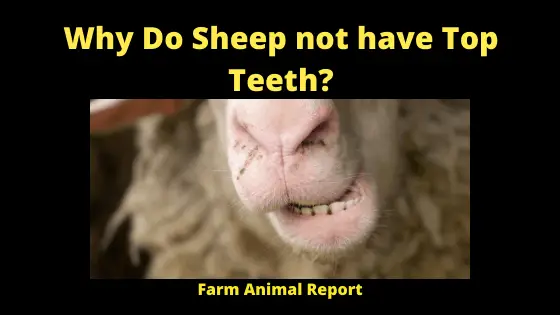As a whole sheep don’t have any top teeth on their upper jaw, only a dental pad. The teeth of a sheep are divided into two distinct sections, namely, eight permanent incisors in the lower front jaw and twenty-four molars, the latter being divided into six on each side of the upper and lower jaw. They have a plate at the front of their mouths that acts like serrated scissors to help them grab grass, They use their tongue to also wrap around roughage and tear it out.
Do Sheep have Top Teeth
Why Do Sheep not have Top Teeth – Sheep have teeth but not at the front. They have a plate at the front of their mouths that acts like serrated scissors to help them grab grass, They use their tongue to also wrap around roughage and tear it out. In the Back of the Mouth, they have five to six-row of teeth to help them chew their food. Their Front Top is a Fibourous Pad They are ruminants that regurgitate their food. Do Sheep have Top Teeth?
Why do we Classify the Sheep as a Ruminant Animal?
Ruminants are hoofed mammals that have a unique digestive system that allows them better to use energy from woody plant material than other herbivores.
Check Our Amazons Resources on Sheep
Unlike monogastric such as swine and poultry, ruminants have a digestive system designed to ferment feedstuffs and provide precursors for energy for the animal to use, by better understanding how the digestive system of the ruminant works, livestock producers can better understand how to care for and feed ruminant animals.
Ruminant Digestive Anatomy and Function:
The ruminant digestive system uniquely qualifies ruminant animals such as sheep to use high roughage feedstuffs, including forages efficiently. Anatomy of the ruminant digestive system including
- Mouth,
- Tongue,
- Salivary glands (producing saliva for buffering rumen pH),
- Esophagus,
- Four-compartment stomach (rumen, reticulum, omasum, and abomasums),
- Pancreas,
- Gall-bladder,
- Small intestine,
- Large intestine.
A ruminant uses its mouth (oral cavity) and tongue to harvest forages during grazing or to consume harvested feedstuffs.
Sheep harvest forages during grazing by wrapping their tongue around the plants and then pulling to tear the forage for consumption.
The roof of the ruminant mouth is a hard/soft palate without incisors. The lower jaw incisors work against this hard dental pad. The incisors of grass/roughage selectors are wide with a shovel-shaped crown.
In contrast, those of concentrate selectors are narrower, and chisel-shaped premolar and molars match between upper and lower jaws. These teeth crush and grind plant material during initial chewing and rumination.
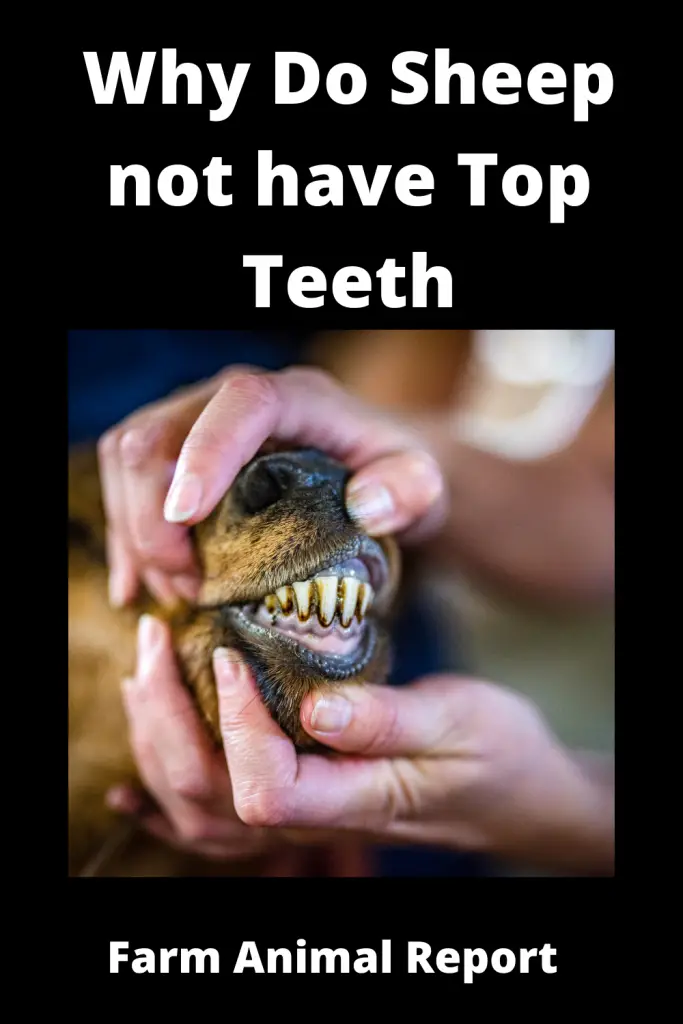
See Our Extensive Guide – 16 Ways to Make Money Sheep Farming
Dental Anatomy of Sheep:
Through dental anatomy, you can know about the age of the sheep.
- The number,
- condition,
- and order of eruption of the permanent incisors
- of sheep is the main indication of their age.
There is, however, a wide variation in the time of eruption of the permanent incisors caused by variation in breed, strain, and environment, and particularly by nutrition.
The teeth of a sheep are divided into two distinct sections, namely, eight permanent incisors in the lower front jaw and twenty-four molars, the latter being divided into six on each side of the upper and lower jaw.
Sheep have no teeth in the front part of the upper jaw which consists of a dense, hard, fibrous pad.
When born, the lamb usually has no teeth. Within a week after birth, the milk teeth temporary teeth appear in the front lower jaw and by the time the lamb is two months old these, eight in all, have erupted.
These temporary teeth are replaced by permanent incisors, which appear in pairs, commencing with the central teeth, followed by one on either side at intervals, until the eight temporary teeth have been replaced.
During the period of teeth are growing, sheep are referred to by the number of permanent incisors present, such as two-tooth, four-tooth, six-tooth, eight-tooth, or full mouth.
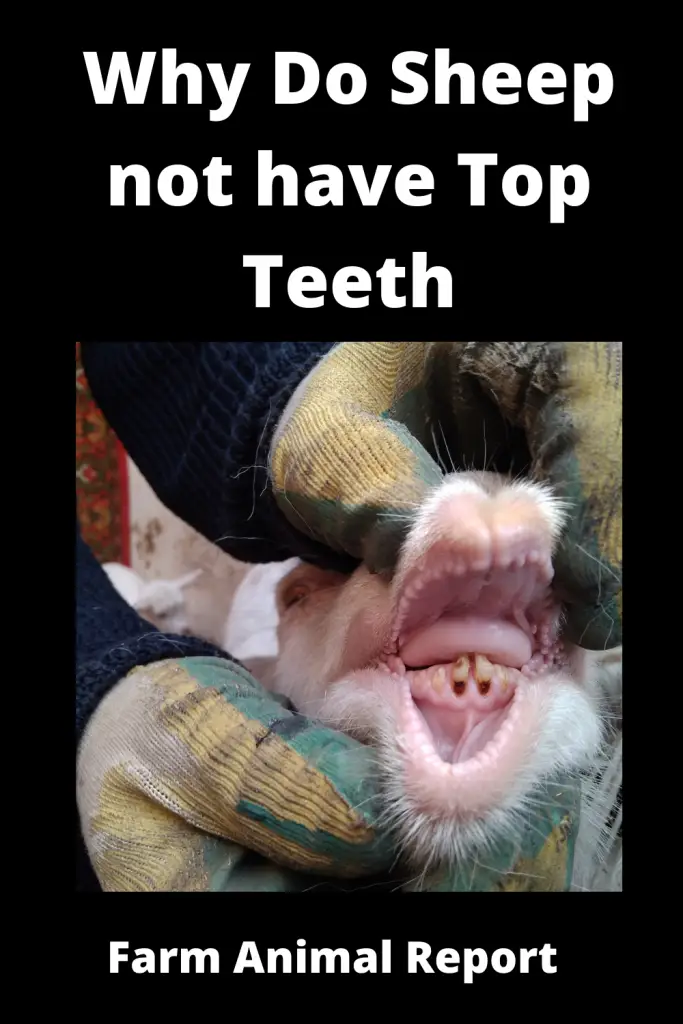
The accompanying diagram sets out the development of the permanent incisors and the variation in age at which they may erupt.
Only a rough estimate of a sheep’s age can be made by looking at its teeth. When estimating the age. It is important to bear in mind whether the breed is early or late maturing.
British breeds, for example, mature at a faster rate than Merinos, and their teeth erupt at an earlier age.
The condition of the teeth will vary according to the type of feed and country grazed on. On the long, soft feed, where close grazing is necessary, particularly if the soil is sandy or gravelly, the teeth will wear down.
Broken Mouth
After the eight permanent incisors have appeared, the next stage is known as ‘broken mouth’. This is the following determination, the rate depending on the conditions under which the sheep were grown.
Gummy
The estimation of age at this stage is very difficult. The teeth gradually become longer with wide spaces, become longer with wide spaces, eventually falling out, or they may wear down, become loose and fall out. After the teeth have fallen out, the sheep is known as a gummy.
Age / By Teeth
- 15 months Only one sheep was rising 2-tooth.
- 16 months Two were 2-tooth and a third was
- rising 2-tooth.
- 19 months All sheep showing as 2-tooth, one
- rising 4-tooth.
- 22 months. All were 4-tooth or rising 4-tooth
- 27 months Two sheep were rising 6-tooth.
- 28 months Two more were rising 6-tooth.
- 29 months All sheep (eight at this stage) were
- rising 6-tooth.
- 32 months All sheep were 6-tooth.
- 34 months Six sheep were rising full mouth.
- 36 months All sheep were rising full mouth.
- 38 months All sheep were full mouth.
See This Page for Lamb – 4 Years Old Diagram
The Function of the Saliva:
Saliva aids in chewing and swallowing contain enzymes for the breakdown of fat and starch and are involves in nitrogen recycling to the rumen. Saliva’s most important function is to buffer pH levels in the reticulum and rumen.
Forage and feed mixes with saliva containing sodium, potassium, phosphate, bicarbonate, and urea when consumed, to form a bolus. That bolus then moves from the mouth to the reticulum through a tube-like passage called the esophagus. Muscle contraction and pressure difference carry this substance down the esophagus to the reticulum.
Chewing the Cud
Ruminants eat rapidly, swallowing much of their feedstuffs without chewing it sufficiently. Then it comes back up and is chewed again mixing salvia.
The esophagus functions bidirectionally in ruminants, allowing them to regurgitate their cud for further chewing, if necessary. The process of rumination or “chewing the cud” is where forage and other feedstuffs are forced back to the mouth for further chewing and mixing with saliva. The cud is then swallowed again and passed into the reticulum.
Then the solid portion slowly moves into the rumen for fermentation, while most of the liquid portion rapidly moves from the reticulorumen into the omasum and the abomasum. The solid portion left behind in the rumen typically remains for up to 48 hours and forms a dense mat in the rumen, where microbes can use the fibrous feedstuffs to make precursors for energy.
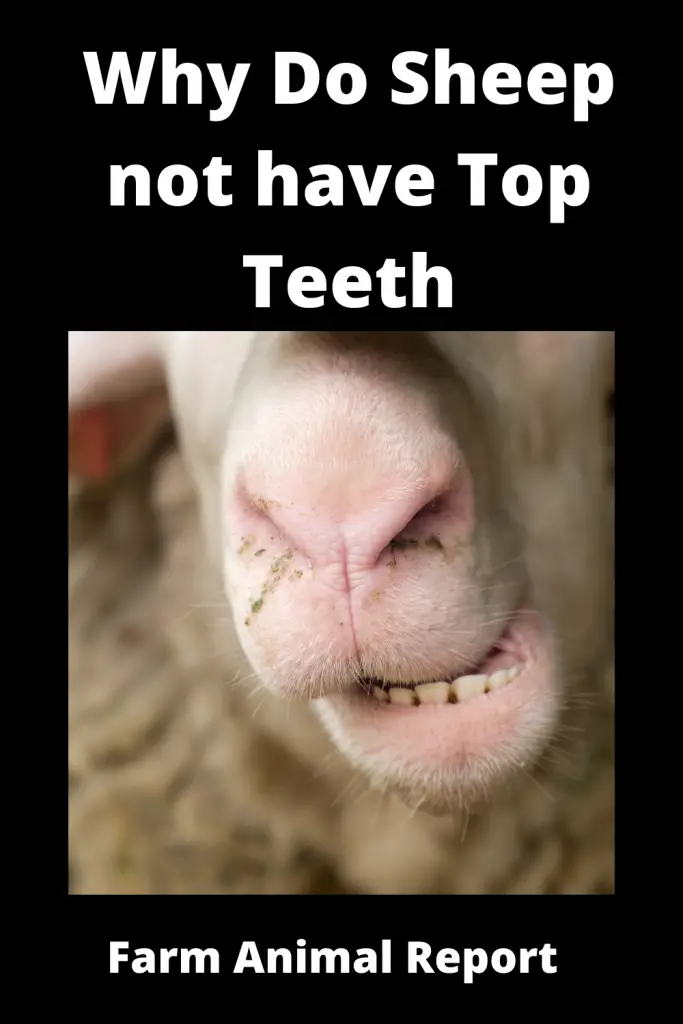
True ruminants, such as sheep have one stomach with four compartments:
- Rumen,
- Reticulum,
- Omasum,
- Abomasums.
The ruminant stomach occupies almost 75 percent of the abdominal cavity, filling nearly all of the left side and extending significantly into the right side. The relative size of the four compartments is as follows: the rumen and reticulum comprise 84 percent of the volume of the total stomach, the omasum 12 percent, and the abomasums 4 percent. The rumen is the largest compartment of the stomach.
The reticulorumen is home to a population of microorganisms (microbes or rumen bugs) that include bacteria, protozoa, and fungi. These microbes ferment and break down plant cell walls into their carbohydrate fractions and produce volatile fatty acids (VAFs), such as acetate (used for fat synthesis), propionate (used for glucose synthesis), and butyrate from these carbohydrates. The animals later use these VAFs for energy.
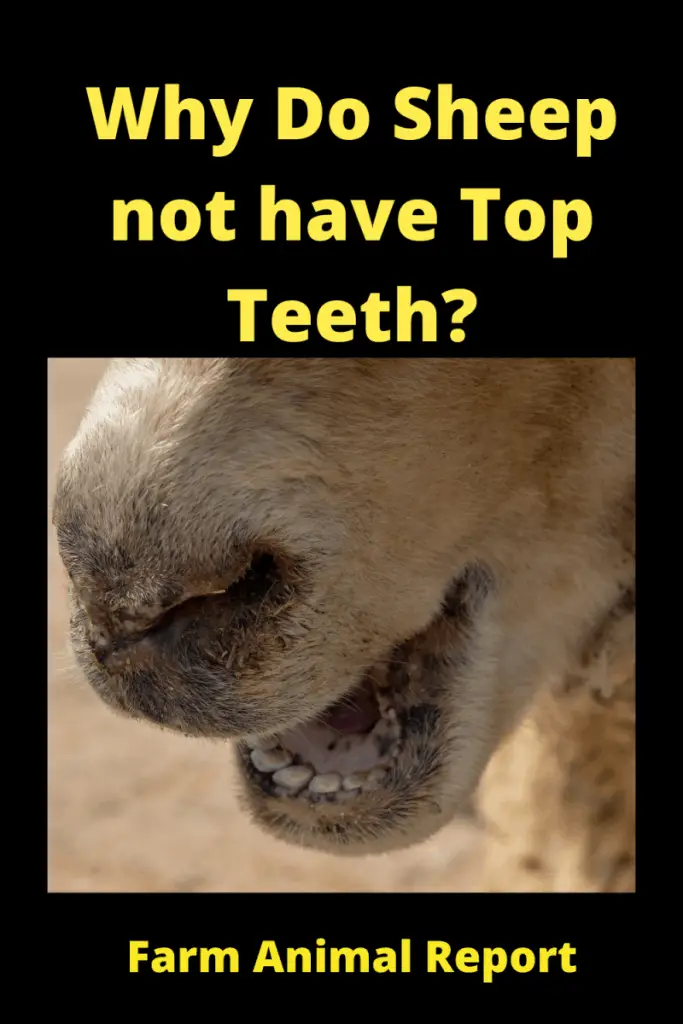
Honeycomb
The reticulum is called the “honeycomb” because of the honeycomb appearance of its lining. It sits underneath and toward the front of the rumen, lying against the diaphragm. Ingesta flows freely between the reticulum and rumen. The main function of the reticulum is to collect smaller digest particles and move them into the omasum, while the large particles remain in the rumen for further digestion.
Paunch
The rumen is sometimes called the “paunch”. It is lined with papillae for nutrient absorption and divided by strong pillars into the dorsal, ventral, caudodorsal, and caudoventral sacs. The rumen acts as a fermentation vat by hosting microbial fermentation. About 50 to 65 percent of starch and soluble sugar consumed is digested in the rumen.
Rumen microorganisms digest
- Cellulose from plant cell walls,
- Digest complex starch,
- Synthesize B vitamins,
- Vitamin K.
- Rumen pH typically ranges from 6.5 to 6.8. The rumen environment is anaerobic. Gases produced in the rumen include carbon dioxide, methane, and hydrogen sulfide. The gas fraction rises to the top of the rumen above the liquid fraction.
Butcher’s Bible
The omasum is spherical and connected to the reticulum by a short tunnel. It is called the many piles, or the butcher’s bible about the many folds or leaves that resemble pages of a book. These folds increase the surface area, which increases the area that absorbs nutrients from feed and water. Water absorption occurs in the omasum.
The abomasums are the true stomach of a ruminant. It is the compartment that is most similar to a stomach in a non-ruminant. The abomasums
- Produce hydrochloric acid
- Digestive enzymes,
- Pepsin (breakdown the protein),
- and receives digestive enzymes secreted from the pancreas,
- Pancreatic lipase (breakdown fats).
- This secretion helps prepare proteins for absorption in the intestines. The pH in the abomasums generally ranges from 3.5 to 4.0. The chief cells in the abomasums secrete mucous to protect the abomasal wall from acid damage.
The small and large intestines follow the abomasums as further sites of nutrient absorption. Digesta entering the small intestine mix with secretions from the pancreas and liver, which elevate the pH from 2.5 to between 7 and 8. The higher pH is needed for enzymes in the small intestine to work properly. Bile from the gall bladder is secreted into the first secretion of the small intestine, the duodenum, to aid in digestion.
Active nutrient absorption occurs throughout the small intestine, including rumen bypass protein absorption. The intestine wall contains numerous “finger-like” projections called villi that increase intestinal surface area to aid in nutrient absorption. Muscular contraction aid in mixing digesta and moving it to the next section.
The large intestine absorbs water from material passing through it and then excretes the remaining material as feces from the rectum. The cecum is a large blind pouch at the beginning of the large intestine. The cecum serves a little function in a ruminant, unlike its role in horses. The colon is the site of most of the water absorption in the large intestine.
Rumen Digestive Development:
Immature ruminants, such as kids of the sheep from birth to the 2 to 3 months of age, as functionally non-ruminants. The reticular grooves in these kids are formed by muscular folds of the reticulum. It shunts milk directly to the omasum and then abomasums, bypassing the reticulorumen.
The rumen in these kids must be inoculated with rumen microorganisms, including bacteria, fungi, and protozoa. This is thought to be accomplished through mature ruminants licking kids and environmental contact with these microorganisms.
Immature ruminants must undergo reticulorumen-omasal growth, including increases in volume and muscle. In a kid at birth, the abomasums are the largest compartment of the stomach, making up more than 50 percent of the total stomach area. The reticulorumen and omasum account for 35 percent and 14 percent of the total stomach area in the newborn kid.
Because immature ruminants do not have a functional rumen, feeding recommendations differ for developing ruminants compared with adult ruminants. For instance, it is recommended immature ruminants are not allowed access to feeds containing non-protein nitrogen such as urea. Developing ruminants are also more sensitive to gossypol and dietary fat levels than mature ruminants.
What Kind of Feed Should be Given to the Ruminants?
Based on the diets they prefer, ruminants can be classified into distinct feeding types:
- Concentrates selectors,
- Grass/roughage eaters,
- and Intermediate types.
The relative sizes of various digestive system organs differ by ruminant feeding type, creating differences in feeding adaptations. Knowledge of grazing preferences and adaptations amongst ruminant livestock species helps in planning a grazing system for each species and also for multiple species grazed together or on the same acreage.
Summary:
The palate is present instead of the upper incisor’s teeth because it helps to grab grass and also helps in the regurgitation of feed.
Sheep Farming for Wool Profitability Table
| Sheep | Lambs / 3 Per Yr | Space Required 20 Sq Feet - Each | Grazing Acres .3 / Sheep | Feed Required / Yr $100 | 15 Lbs Wool / Year | Average Price $ 10 / LB Wool | Total Revenue Possible |
|---|---|---|---|---|---|---|---|
| 1 | 3 | 60 sq ft | .9 acres | $ 300 | 45 lbs | $ 450 | $ 150 |
| 2 | 6 | 120 sq ft | 1.80 acres | $ 600 | 90 lbs | $ 900 | $ 300 |
| 5 | 15 | 300 sq ft | 4.5 acres | $ 1,500 | 225 lbs | $ 2,250 | $ 750 |
| 10 | 30 | 600 sq ft | 9 acres | $ 3,000 | 450 lbs | $ 4,500 | $ 1,500 |
| 20 | 60 | 1200 sq ft | 18 acres | $ 6,000 | 900 lbs | $ 9,000 | $ 3,000 |
| 30 | 90 | 2,700 sq ft | 27 acres | $ 9,000 | 1,350 lbs | $ 13,500 | $ 4,500 |
| 40 | 120 | 4800 sq ft | 36 acres | $ 12,000 | 1,800 lbs | $ 18,000 | $ 6,000 |
| 50 | 150 | 3,000 sq ft | 45 acres | $ 15,000 | 2,250 lbs | $ 22,500 | $ 7,500 |
| 100 | 300 | 6,000 sq ft | 90 acres | $ 30,000 | 4,500 lbs | $ 45,000 | $ 15,000 |
| 200 | 600 | 12,000 sq ft | 180 acres | $ 60,000 | 9,000 lbs | $ 90,000 | $ 30,000 |
Sheep can Produce 2 - 30 lbs of wool per year depending on Breed
Raw washed Wool Runs $ 6 - $ 14 using average $ 10
Feed 5 Months Buying Hay $ 100 rest Grazing
Please Check my Numbers
Sheep Farming for Milk Profitability Table
| Sheep | Lambs / 3 Per Yr | Space Required 20 Sq Feet - Each | Grazing Acres .3 / Sheep | Feed Required / Yr $100 | Wool $ 15 lb / Year | Average Price $ 10 / LB Wool | 90 Gallon/ Yr each ewe | Price $ 30 per Gallon | Total Wool Revenue Possible | Total Revenue Milk and Wool |
|---|---|---|---|---|---|---|---|---|---|---|
| 1 | 3 | 60 sq ft | .9 acres | $ 300 | 45 lbs | $ 450 | 270 | 8100 | $ 150 | 8,250 |
| 2 | 6 | 120 sq ft | 1.80 acres | $ 600 | 90 lbs | $ 900 | 540 | 16,200 | $ 300 | 16,500 |
| 5 | 15 | 300 sq ft | 4.5 acres | $ 1,500 | 225 lbs | $ 2,250 | 1350 | 40,500 | $ 750 | 41,250 |
| 10 | 30 | 600 sq ft | 9 acres | $ 3,000 | 450 lbs | $ 4,500 | 2700 | 81,000 | $ 1,500 | 82,500 |
| 20 | 60 | 1200 sq ft | 18 acres | $ 6,000 | 900 lbs | $ 9,000 | 5400 | 162,000 | $ 3,000 | 165,000 |
| 30 | 90 | 2,700 sq ft | 27 acres | $ 9,000 | 1,350 lbs | $ 13,500 | 8100 | 243,000 | $ 4,500 | 247,500 |
| 40 | 120 | 4800 sq ft | 36 acres | $ 12,000 | 1,800 lbs | $ 18,000 | 10,800 | 324,000 | $ 6,000 | 330,000 |
| 50 | 150 | 3,000 sq ft | 45 acres | $ 15,000 | 2,250 lbs | $ 22,500 | 13,500 | 405,000 | $ 7,500 | 412,500 |
| 100 | 300 | 6,000 sq ft | 90 acres | $ 30,000 | 4,500 lbs | $ 45,000 | 27,000 | 810,000 | $ 15,000 | 825,000 |
| 200 | 600 | 12,000 sq ft | 180 acres | $ 60,000 | 9,000 lbs | $ 90,000 | 54,000 | 1,620,000 | $ 30,000 | 1,650,000 |
Sheep can Produce 1/2 Gallon Milk per day / 180 Day Lactation
Raw Sheep Milk $9 - $25 per Quart - Used $ 30 per Gallon for Table
Feed 5 Months Buying Hay $ 100 rest Grazing
Please Check my Numbers
18 Breeds of Hair Sheep FAQ Table
| Hair Breeds of Sheep | Country Origin | Purpose of Breed | Use | Ewe Weight |
|---|---|---|---|---|
| Katahdins | Caribbean / Maine / Africa | To Graze Power lines / instead of Chemicals | Meat | 120 - 160 lbs |
| Dorper | South Africa | Thrive in Africa / Hot Climate | Meat / Fast Growing | 230 LBs |
| Blackbelly | America | Hot Climates | Meat | 150 LBs |
| St. Croix | Carribean | Came on Ships for Meat for sailors | Meat | 150 lbs |
| Romanovs | Russia | Primarily for Meat | Meat Wool - Double Coated | 110 lbs |
| Blackhead Persian | Africa / Somaila | Bred for High Quanity of Fat | Meat | 120 lbs |
| West African Dwarf | South / Central Africa | Meat | 55 lbs | |
| Red Maasi | East Africa | Bred for Hardiness and parasite Resistance | Meat | 77 Lbs |
| Wiltshire Horn | England | Do not suffer from Flystrike | Meat | 149 lbs |
| Royal White | United States / Texas | Bred for Tender Meat and Disease Resistants | Meat | 175 lbs |
| California Red | Not completely Hair sheep/ Combination of both/ Prod 2 lambs Yr | Meat | 140 lbs | |
| Damara | Egypt | Vigorous with fast growing / in extreme conditions | Meat | 110 lbs |
| Pelibuey | Cuba / Mexico | Tropical Sheep | Meat | 75 lbs |
| Africana | Columbia / Venezula | Meat | 110 lbs | |
| Morada | Brazil | Survive Scrub | Meat | 66 lbs |
| Brazillian Somaila | South Africa / Somali | Meat | ||
| Uda | Africa | Long Legged Sheep | Meat | 88 lbs |
| Touabire | Africa | Dairy / Meat | 77 lbs |
Minature Breeds of Sheep
| Breed | Height | Weight / Full Grown | Food Per Day | Lifespan | Wool / Hair Sheep | Cost |
|---|---|---|---|---|---|---|
| Quessant Sheep | !8" | 28 - 30 Lbs | 1/2 - 1lb | 10 - 12 Yrs | Wool | $ 350 - 450 |
| Baby Doll Southdown | 18" | 75 lbs | 2 - 3 Lbs | 10 - 12 Yrs | Wool | $ 350 -450 |
| Southdown Sheep | 18" - 24" | 130 lbs | 6 - 6 lbs | 10 - 12 Yrs | Wool | $ 180 - $ 600 |
| Cheviot Sheep | 20" | 130 Lbs | 6 - 6 lbs | 10 - 12 Yrs | Wool | $ 180 - $ 600 |
| Border Cheviot | 20" | 130 lbs | 6 - 6 lbs | 10 - 12 Yrs | Wool | $ 180 - $ 600 |
| Shetland Sheep | 24" | 75 - 100 lbs | 6 - 6 lbs | 10 - 12 Yrs | Wool | $ 50 - $100 |
| Navajo - Churro | 20" | 110 lbs | 6 - 6 lbs | 10 - 12 Yrs | Wool | $ 200 |
Amount of Food they Need
Lifespan
Wool - They Need to be Sheared Hair Sheep - Do not Grow Woll but shed Hair once a year
Pricing Depend whether you just want Sheep Or you want to Breed
Toxic Plants for Sheep Pastures
| Toxic / Poisonous Plant | Symptoms / Characteristics |
|---|---|
| Garden Iris | Roots and stems |
| Holly | Berries - Diarrhea - vomiting - stupor |
| Morning Glory | hallucinogenic seeds |
| Rhubarb | Leaves - Convulsions and Death |
| Wild Cherry | Wilted Leaves have Cynaide - Convolusions, Rolling Eyes, Tongue hanging, animal dies within hours |
| Yew | Needle Like Shrub - vomiting, convulsions, animals Rarely survive this poisoning |
| Oaks | Acorns, young trees - anorexia, constipation diahreah thirst gastro problems |
| Mountain Laurel | Same symptoms of Poiaoning. Vomiting, Diahreah, salivation - Usually fall into Coma and then Death |
| Rhododendron | Same symptoms of Poiaoning. Vomiting, Diahreah, salivation - Usually fall into Coma and then Death |
| Azalea | Same symptoms of Poiaoning. Vomiting, Diahreah, salivation - Usually fall into Coma and then Death |
many of these are found around Fence Rows
Fields Should be Checked
Sheep Associations 10 Breeds of Sheep
| Breeds of Sheep | Country Origin | Purpose of Breed | Use | Ewe Weight | Association For Info |
|---|---|---|---|---|---|
| Suffolk Sheep | Britian / Suffolk | Fast Growing | Meat | 250 - 350 Lbs | United Suffolk Sheep Association |
| Merino Sheep | Spain | Softest Wool | Wool | 100 - 200 Lbs | American and Delane Merino Sheep Association |
| Hampshire | Britain | Best Tasting Mutton | Wool / Meat | 200 Lbs | American Hampshire Sheep Association |
| Romney | England / Romney Marsh | Disease Resistance | Wool / Meat | 225 - 275 Lbs | American Romney Breeders Association |
| Lincoln Sheep | England | Produce Longest Fleece In World | Wool | 250 - 350 Lbs | National Lincoln Sheep Breeders Association |
| Dorper Sheep | South African | Fast Growing Meat | Meat | 230 Lbs | American Droper Sheep association |
| Turcana Sheep | Romainia | Adapted Alpine Pasture | Wool / Milk / Meat | 175 - 200 Lbs | ? |
| Rambouilette Sheep | France | Strong / Hearty / All Climates | Wool / Meat | 300 Lbs | American Rambouilette Sheep Breeders Association |
| Leicester Longwool | United Kingdom | Fast growing / Good Fleece | Wool | 200 Lbs | Leicester Longwool Sheep Breeders Association |


